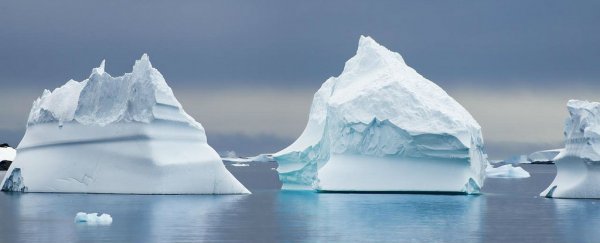Melting icebergs are a consequence of global warming and a major contributor to rising sea levels, but as they melt, they're also helping to slow down the effects of climate change, a new study has found. It looks like the trails of algae that these icebergs leave behind are trapping significant amounts of carbon dioxide that would otherwise escape into the atmosphere.
To figure this out, a team from the University in Sheffield in the UK has analysed 175 high-resolution satellite photos of giant icebergs in the Southern Ocean near Antarctica, and found that these shrinking, drifting blocks of ice were leaving green trails behind them up to 1,000 km (620 miles) long. These trails represent blooms of phytoplankton - tiny algae that are able to thrive in the nutrient-rich water left by the melting ice.
Phytoplankton growth leads to what's known as carbon sequestration - the long-term storage of carbon dioxide in the ocean. According to the researchers' calculations, the flourishing algae account for 20 percent of the carbon stored in the Southern Ocean - a region responsible for 10 percent of trapped carbon across the planet as a whole (that equates to millions of tonnes). As the algae die off, they fall to the bottom of the ocean, trapping the CO2 they've absorbed while at the surface.
While the climate changes brought on by melting icebergs are very serious, the resulting reduction in carbon dioxide levels might temper some of the changes scientists are expecting in the coming years. "If giant iceberg calving increases this century as expected, this negative feedback on the carbon cycle may become more important than we previously thought," said study leader, Grant Bigg.
"This new analysis reveals that giant icebergs may play a major role in the Southern Ocean carbon cycle," he added. "We detected substantially enhanced chlorophyll levels, typically over a radius of at least 4-10 times the iceberg's length."
These increased levels of chlorophyll, which indicate the presence of phytoplankton, were detected for more than a month after icebergs had passed, based on the photos taken from 2003 to 2013.
Manual methods of carbon sequestration have been proposed as one potential way of fighting climate change, although it does happen naturally as well: sperm whales are known to contribute iron nutrients into the waters of the Southern Ocean (just like giant melting icebergs), which is part of the reason why there's such fierce debate over whaling practices in the region.
The study has been published in Nature Geoscience.
